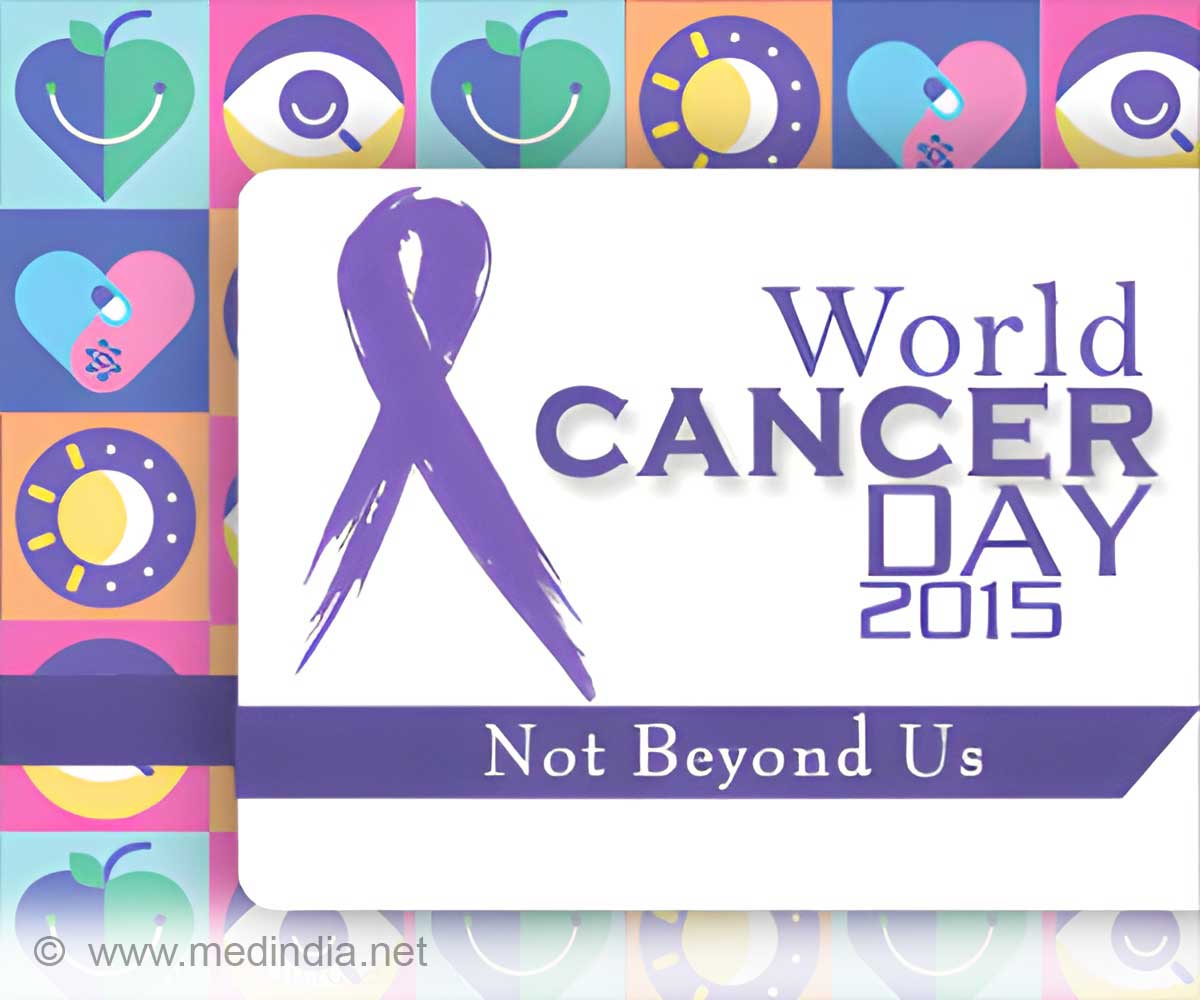World Cancer Day (WCD) is observed on 4th February every year to sensitize communities and governments about cancer.

Theme of World Cancer Day
This year the theme of WCD is “Not Beyond Us” meaning cancer is a disease we can all beat. WCD 2015 theme calls for a positive and proactive approach to fight cancer. The theme highlights solutions to beat cancer are available and well within our reach.WCD is a day to mark the grit and courage shown by people fighting cancer. It is a day to remind all those survivors that cancer can be beaten. A day to celebrate the life of every survivor as these people has shown us the way to hope.
WCD 2015 hopes to make people more aware about prevention and early diagnosis. The importance of early diagnosis cannot be stressed enough. An early diagnosis is half the problem solved because timely treatment means better prognosis. The WCD campaign is an opportunity to bring together individuals, communities, health care providers and governments to work together to evolve positive solutions.
The WCD campaign 2015 involves four key areas of focus:
- Choosing healthy lives
- Delivering early detection
- Achieving treatment for all
- Maximizing quality of life
Importance of World Cancer Day
Over 8.2 million people worldwide die of cancer every year of which 4 million people are in the age group 30-69 years. Cancer is now a rising global epidemic. Environments and lifestyles pose increased cancer risk to global communities.There is an urgent need for a global action plan to develop viable strategies to address cancer risk prevention and accessible treatment. The disparities among communities in their access to early detection, treatment and palliatives also need urgent address. WCD is an opportunity to raise the issue globally through world media to sensitise and make people and governments more aware. WCD expresses the collective responsibility of all global communities in supporting low- and middle-income countries who continue to deal with the burden of cancer with limited resources.
Prevention is better than Cure
At least one-third of all cancers are preventable according to the World Health Organization (WHO). Prevention is the best strategy to address the burden of cancer. WHO lists out 7 preventive measures to minimize the cancer risk:1. Avoid tobacco – Tobacco is responsible for nearly 22% of cancer deaths every year. Using tobacco in any form (chewing or smoking cigarettes) can cause cancers in the lung, oesophagus (food pipe), larynx (voice box), mouth, throat, kidney, bladder, pancreas, stomach and cervix.
3. Alcohol use – Excessive alcohol use is responsible for many cancers like liver, colorectal and breast. Cut down on heavy drinking and choose to go moderate on alcohol.
4. Infections – Infective agents cause nearly 22% of cancer deaths in the developing nations and 6% in developed nations each year. Viral hepatitis B and C causes liver cancer, the human papilloma virus (HPV) causes cervical cancer and the bacterium Helicobacter pylori increases the risk of stomach cancer. Preventive measures include regular vaccination against viral hepatitis B and C and HPV.
5. Environmental pollution – Carcinogenic pollutants in the air, water and soil account of 1-4% of all cancers. Individuals, communities and governments need to take on the responsibility of ensuring carcinogen-free environments to minimize cancer risk.
6. Occupational carcinogens – Working with hazardous chemicals and materials like asbestos increase the risk of cancer. Carcinogens in paint usually cause nasopharyngeal cancer. Asbestos exposure is linked to skin cancer. Avoiding exposures to such carcinogens is essential to minimize the risk of cancer.
7. Radiation – Ionizing radiation (x-rays) and UV (ultraviolet) radiation exposure increases the risk from cancer. Minimizing x-ray overexposure and using protective sunscreens from solar radiation are effective preventive measures.
Not Beyond Us
The word “cancer” is dreaded by everybody. The ‘Big C’ as it is called is one of the most feared diseases with little hopes of cure. However, there are examples to show that cancer is not beyond us and early diagnosis along with timely treatments have offered great hope to people. We have examples of gritty survivors in our own country who have proved to us that cancer cannot stop life. Indian cricketer Yuvraj Singh beat germ cell cancer to once again take up the bat and play on field. Bollywood actress Manisha Koirala was diagnosed with ovarian cancer. After surgery and intensive chemotherapy, the actress has recovered.Closer home, many of us have seen family members, friends and acquaintances battle against cancer. While we have seen some succumb, we have also seen many beat the disease and make it. Those who survived to tell the tale emphasize the need for early detection and treatment which makes it possible to avoid recurrence. Many cancers are fully curable if diagnosed and treated on time.
Cancer need not be a death sentence if communities have access to the right diagnosis and treatment. Accessible treatment, a positive outlook and a measure of determination can beat cancer out of its own game. The theme of World Cancer Day 2015 rightly stresses on the need to take a positive and proactive approach in beating cancer. Yes. Cancer is Not Beyond Us!














